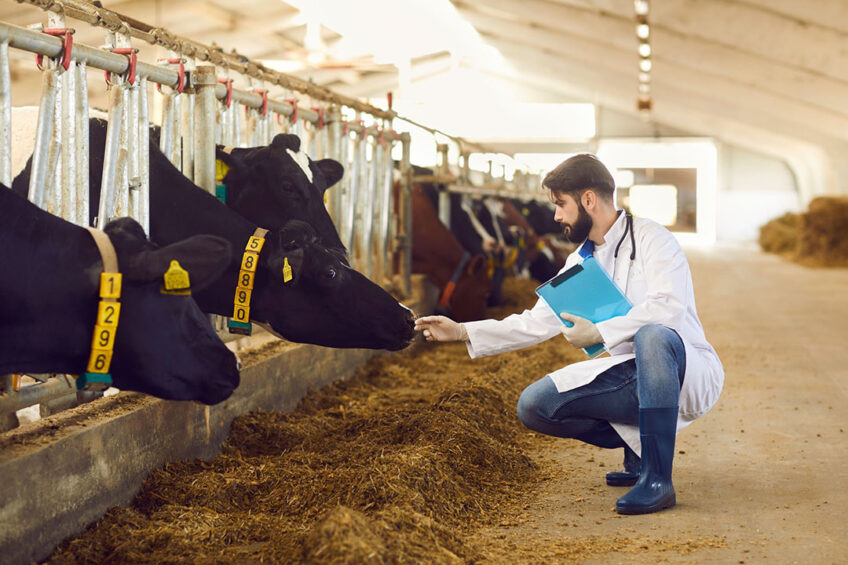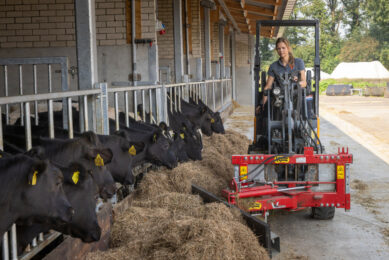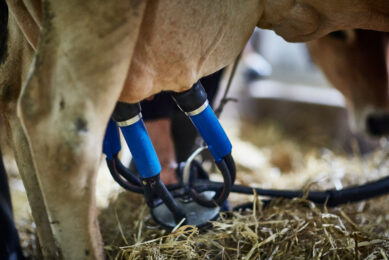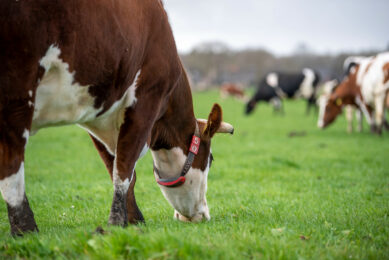Progress in tackling antibiotic use in UK dairy

Data around the use of antibiotics has for the first time been published from the dairy sector in the annual Responsible Use of Medicine in Agriculture (RUMA)Targets Task Force report.
The data, which also included limited information from the beef and sheep sectors, has been taken from the Agriculture and Horticulture Development Board’s voluntary Medicine Hub.
Ruminant sector
It marks a significant step for the UK’s ruminant sector and shows that the ruminant sector is a low and a responsible user of antibiotics.
Chris Gooderham, AHDB livestock science and environment director, said efforts from across the industry, including farmers, bulk data holders, processors and retailers, had helped get Medicine Hub to where it was today.
“We exceeded the targets set by the RUMA Target Task Force for the number of datasets uploaded to the Hub in 2022. With targets doubling next year (4,000 records per sector and 8,000 in 2024), work continues to engage stakeholders along the supply chain to encourage even greater use of Medicine Hub for new and existing data sets.”
Responsible use of antibiotics in the future
“The more data we gather, the more representative of each sector it will be. With more data uploaded, we can provide better evidence of the sector’s responsible use of antibiotics and take an active part in shaping usage targets and future plans for stewardship.”
The UK Veterinary Antibiotic Resistance and Sales Surveillance Report for 2022 shows that:
- Sales of antibiotic intramammary tubes for lactating cows showed a 15% reduction from 0.5 Defined Course Dose for veterinary (DCDvet) (2019-2021 average) to 0.49 DCDvet (2020-2022 average).
- Similarly, sales of antibiotic intramammary tubes for dry cows also showed an 8% reduction from 0.54 to 0.49 in the corresponding period.
- Yearly sales of HP-CIA injectable products licensed for cattle decreased by 0.03 mg/kg from 2021 to 0.20 mg/kg in 2022. In total, sales of HP-CIA injectables licensed for cattle have fallen by 81% (0.89 mg/kg) since 2014.
The report said the antibiotic use data from 2022 represented 28% of adult dairy cattle. Total antibiotic use in the sample was 16.6 mg/kg and use of HP-CIAs was 0.03 mg/kg.
The Cattle Antibiotic Guardian Group reported that data was collected from 2,430 dairy enterprises out of the 7,500 dairy farms – considerably higher than the 2,132 UK beef enterprises that had completed results out of approximately 60,000 enterprises.
It added: “As more data are collated by Medicine Hub from a greater number and variety of farms, the antibiotic use figures are expected to change and are likely to better reflect use within the UK dairy and beef sectors.”
Sophie Throup, head of agriculture at Morrisons and member of the Food Industry Initiative on Antimicrobials (FIIA), said that with a 59% reduction in sales of antibiotics to treat UK farm animals over the past years, the UK had a good story to tell.
Positive steps by farmers and vets
“Being able to evidence specific use in the cattle and sheep sectors through Medicine Hub data is a really meaningful step forward, and a testament to the many positive steps taken by farmers and vets to reduce actual antibiotic use,” she said.
Dean Holroyd, technical director at ABP and fellow FIIA steering group member, said a considerable collaborative effort had underpinned the publication of Medicine Hub data this year: “Collating records in the cattle and sheep sectors has proved far more challenging than in others such as pigs and poultry, which have been reporting national levels of data for several years. This is down to the sheer number of dairy, beef and sheep farms – almost 100,000 – as well as complex supply chains, so there’s been a lot of effort to identify and upload data.”
Natalie Smith, Tesco’s head of sustainable agriculture, welcomed the engagement from dairy consultancy company Kingshay, which had contributed a significant amount of data from its own antibiotic monitoring initiatives.
*The report can be found here.
Join 13,000+ subscribers
Subscribe to our newsletter to stay updated about all the need-to-know content in the dairy sector, two times a week.










